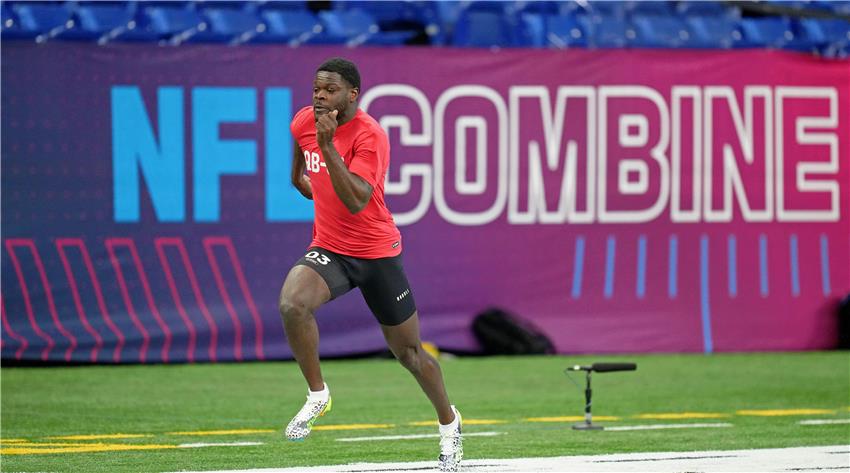
Decoding the Draft- The Game-Changing Impact of the NFL Combine
Every February, the eyes of the football world converge on Indianapolis for the annual NFL Scouting Combine. This week-long event brings together over three hundred of the most talented college football players who hope to make a strong impression and boost their stock for the upcoming NFL Draft.
The players participate in a series of physical and mental tests in front of NFL coaches, general managers, and scouts. These tests measure a player's skills, athleticism, and intelligence, all of which can have a significant impact on their draft position.
The NFL Combine: An Overview
The NFL Combine is essentially a standardized testing platform that offers players the opportunity to showcase their athletic abilities, football intelligence, and personality traits. It features a series of physical drills, including the 40-yard dash, bench press, vertical jump, and broad jump. Additionally, participants undergo mental assessments like the Wonderlic test and engage in interviews with team officials. While these tests might seem arbitrary to some, they can be game-changers, potentially swaying a team's decision and altering a player's draft position.
Criticism of the Combine
Despite the significance placed on the Combine, its influence on a player's draft position is often a point of contention. Critics argue that the Combine focuses excessively on physical metrics, often overlooking a player's game performance or football acumen. They point to instances of "workout warriors," players who excel at the Combine but fail to replicate that success on the field. One such example is Mike Mamula, a defensive end from Boston College, whose stellar Combine performance didn't translate into a standout NFL career.
In Defense of the Combine
However, supporters of the Combine assert that it provides a unique chance to compare players on a level playing field. By putting all participants through the same set of drills and tests, teams can directly compare results, eliminating many variables present in game film analysis. This approach can either affirm a player's athletic ability or uncover physical talents that may have been underutilized in their college system.
The Combine's Impact on Draft Position
The 40-yard dash, one of the most anticipated events of the Combine, serves as a key example. It's not a definitive predictor of success, but players who clock faster times, particularly those in speed-dependent positions, often find themselves climbing draft boards. However, it's not foolproof. Jerry Rice, widely considered one of the greatest wide receivers in NFL history, clocked a relatively slow 40-yard dash time of 4.71 seconds. Nevertheless, his on-field performance far exceeded many of his faster peers, underscoring that Combine numbers should be only a part of the evaluation process.
The Importance of Interviews
The Combine isn't just about physical prowess. It also provides teams an opportunity to evaluate a player's mental makeup. Interviews allow teams to gauge a player's football intelligence, leadership capabilities, and off-field behavior. A prospect demonstrating a high football IQ and strong character traits can elevate their draft stock, even with a mediocre physical performance.
Consider Tom Brady's story. Despite a lackluster Combine performance, Brady's competitive nature, leadership qualities, and football intelligence shone through in team interviews. These factors, along with his subsequent hard work and dedication, propelled him to one of the most illustrious careers in NFL history, despite being picked 199th overall in the 2000 NFL Draft.
The Downsides of a Poor Combine Performance
On the flip side, a poor Combine performance can seriously harm a player's draft stock. A slow 40-yard dash time for a wide receiver, a low bench press count for an offensive lineman, or a low Wonderlic score for a quarterback can all raise red flags. Medical evaluations can reveal previously undisclosed injuries, and poor interviews can cast doubts on a player's maturity or dedication.
The case of Maurice Clarett, a former Ohio State running back, serves as a cautionary tale. Clarett, after a spectacular freshman year, ran into off-field issues. When he declared for the NFL Draft, his Combine performance was underwhelming. He was slow in the 40-yard dash, and his interviews raised concerns about his attitude and commitment. Consequently, Clarett plummeted from being a potential first-round pick to going undrafted.
The Combine in Context
In conclusion, while the NFL Combine is a high-stakes event that can significantly impact a player's draft position, it is not the be-all and end-all. It's just one part of a comprehensive player evaluation process that includes game tape analysis, pro day performances, personal interviews, and individual team workouts.
As the NFL continues to evolve, so too will the Combine and its role in the draft process. While debates about its relevance and effectiveness will continue, one thing is clear — the Combine is more than just a spectacle. It's a significant piece of the draft puzzle, an event that carries weight, and one that can dramatically influence a player's journey to the NFL.
